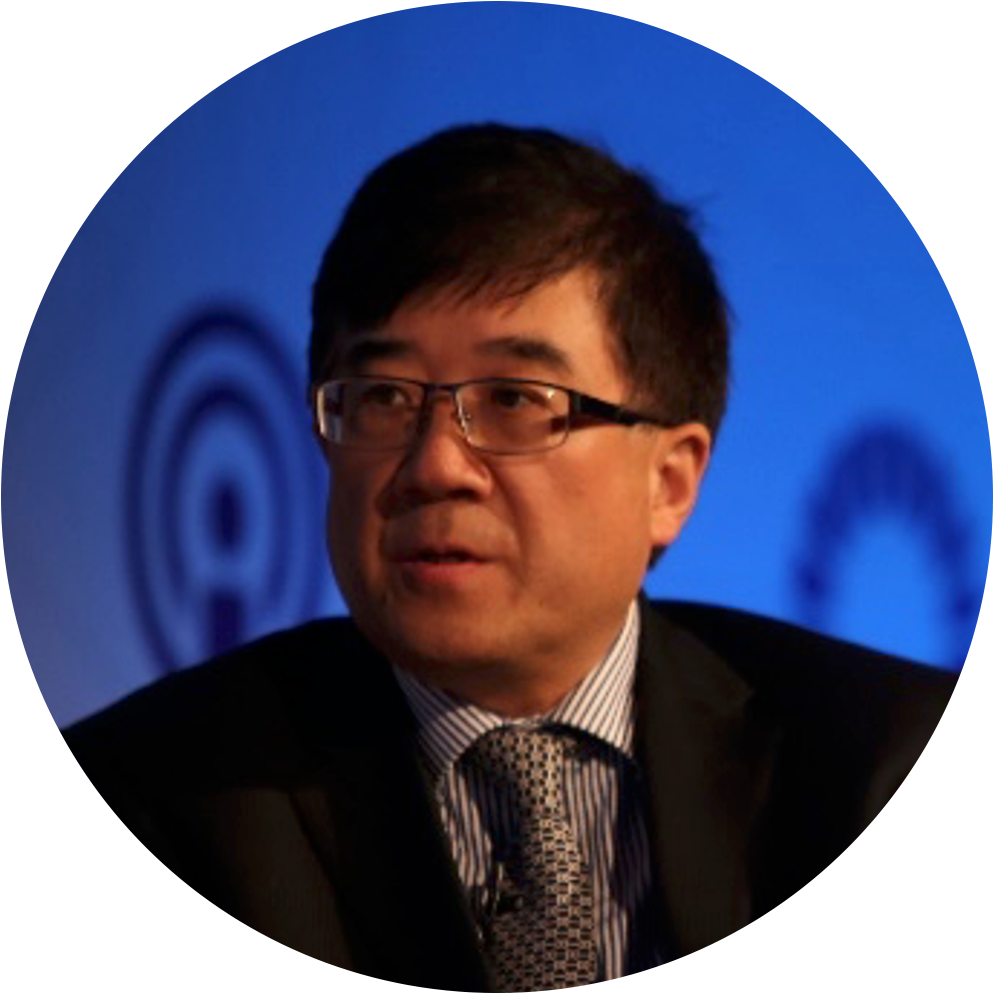PANEL DISCUSSIONS
Goal-oriented Semantic Token Communications –Evolution or Revolution for Wireless Communication System?
With the explosive emergence of new AI applications, i.e., intelligent robots, remote driving, and intelligent interactive devices, the real-time uplink transmission of multimodal content poses new challenges to wireless networks. These trends are driving the evolution of communication systems toward semantic token communication, which focuses on the “meaning” behind transmitted bits to facilitate more intelligent and adaptive communication services. Moreover, the use of generative foundation models or multimodal large models in semantic communication further leads to tokenized communication, where the basic units of meaningful transmission become tokens instead of bits. Potential new transmission schemes, evaluation metrics, QoS definitions need a fresh look of investigation.
So far, semantic token communication remains in its baby phase. How to define the semantic tokens in the context of human to human communication, human-to-machine communication, and machine-to-machine communications remain unclear. Also, there are controversial views toward this topic. For instance, is semantic token communication a technological advancement that solely pertains to the information source, or it needs to take wireless channel into consideration? Will the design of semantic token communication change the end-to-end architecture of the wireless system, or it only affects some modules of the air interface, or it is just an add-on feature that won’t change any of the fundamental modules? To tackle these intricate challenges head-on, we extend a warm invitation to leading scholars from both academia and industries to join the panel discussion and share views.
Proposer

Yan Chen
Huawei Technologies
Yan Chen received her B.Sc. and Ph.D. degrees from Chu Kochen Honored College and Institute of Information and Communication Engineering from Zhejiang University in 2004 and 2009, respectively. She was a visiting researcher at Hong Kong University of Science and Technology from 2008 to 2009. She joined Huawei Technologies Shanghai in 2009 and from 2010 to 2013, she was the project manager and technical leader of Huawei internal Green Radio project and manager of the Green Transmission Technology (GTT) project at GreenTouchTM Consortium. Since 2013, she is one of the key technical leaders on 5G air interface design and the related 3GPP standardization in Huawei, focusing on multiple access including NOMA transceivers, grant-free massive access, and ultra-reliable and low-latency communications. Now she is leading the 6G vision and technology study in Huawei. Her research interests include novel 6G use cases and key capabilities such as collaborative robotics, new enabling technologies and architectures such as integrated sensing and communication (ISAC), radio network for distributed AI learning and inference, next generation multiple access (NGMA), as well as system level evaluation methodologies for new usage scenarios. She is Distinguished Lecturer of the IEEE Vehicle Technology Society and serves as guest editor of IEEE Communications Magazine and Co-Chair of the Emerging Technology Initiative (ETI) on NGMA. She won the IEEE Communication Society Award for Advances in Communication in 2017.
Questions
- What is semantic token communication? Is semantic token communication equivalent to source compression?
- Will semantic token communication change the traditional wireless architecture?Does semantic token communication involve changes to the air interface architecture?
- Semantics vs bits: what is the difference? Semantic token communication focuses on the “meaning” while conventional communication focuses on bit recovery. If the air interface still transmits and verifies/reconstructs data in bits, then for the air interface, it remains a bit-based transmission system. So, does semantic token communication require wireless communication to transmit and verify information in semantic units?
- What are the most relevant scenarios for semantic token communication? In which scenarios will semantic token communication most likely play a crucial role? will it be XR/VR, intelligent robots, remote driving, satellite communication, or portable AI devices, such as smart glasses?
- What are the remaining challenges to bring semantic token communication into reality?What topic should the industry and academic society collaborate on to advance semantic token communication? Potential areas include joint encoding and air interface optimization, knowledge base design, generative paradigms, multi-agent communication, or architectural design.
Participants List
Moderator:
Yansha Deng (Associate Professor/King’s College London/United Kingdom)
Panellists:
1. Wen Tong (CTO/ Huawei Technologies/ Canada)
2. Tony Q.S. Quek (Professor/Singapore University of Technology and Design/Singapore)
3. Emilio Calvanese Strinati (Director of New-6G Program/CEA Leti, University Grenoble Alpes/ France)
4. Luke Ibbeston (Head of Group Research & Development/Vodafone/United Kingdom)
5. Petar Popovski (Professor Aalborg University)
6. Qi Liao (Senior Research Engineer/Nokia Bell Labs/Germany)
participants

Yansha Deng
Senior Member, IEEE
Yansha Deng (Senior Member, IEEE) is currently a Reader (Associate Professor) in the Department of Engineering at Kings College London, London, United Kingdom. She received her Ph.D. degree in electrical engineering from the Queen Mary University of London, U.K., in 2015. From 2015 to 2017, she was a Post-Doctoral Research Fellow with Kings College London, U.K. She has secured more than £2.6 million of research funding as the principal investigator and has received the EPSRC NIA award. She has published 120+ journal papers and 60+ IEEE/ACM conference papers. Her research interests include molecular communication and machine learning for 5G/6G wireless networks. She was a recipient of the Best Paper Awards from ICC 2016 and GLOBECOM 2017 as the first author, and the IEEE Communications Society Best Young Researcher Award for the Europe, Middle East, and Africa Region 2021. She has been the Senior Editor of IEEE Communications Letters since 2020, the Associate Editor of IEEE Transactions on Communications since 2017, the Associate Editor of IEEE Communications Surveys and Tutorials since 2022, the Associate Editor of IEEE Transactions on Machine Learning in Communications and Networking since 2022, the Associate Editor of IEEE Transactions on Molecular, Biological and Multi-scale Communications since 2019, the Associate Editor of IEEE Open Journal of Communications Society since 2019 and the Vertical Area Editor of IEEE Internet of Things Magazine since 2021.

Wen Tong
Fellow, IEEE
Wen Tong (Fellow, IEEE) received the B.S. degree from the Department of Radio Engineering, Nanjing Institute of Technology, Nanjing, China, in 1984, and the M.Sc. and Ph.D. degrees in electrical engineering from Concordia University, Montreal, QC, Canada, in 1986 and 1993, respectively. He joined the Wireless Technology Labs, Bell Northern Research, Canada, in 1995. In 2011, he was appointed as the Head of the Communications Technologies Labs, Huawei. He also spearheads and leads Huawei’s 5G wireless technologies research and development. Prior to joining Huawei in 2009, he was the Nortel Fellow and the Head of the Network Technology Labs, Nortel. He is currently the Huawei Fellow and the CTO of Huawei Wireless. He is the Head of the Huawei Wireless Research. He pioneered fundamental technologies from 1G to 5G wireless with more than 500 awarded U.S. patents. He was elected as a Huawei Fellow. He was a recipient of the IEEE Communications Society Industry Innovation Award for “the leadership and contributions in development of 3G and 4G wireless systems” in 2014, and the IEEE Communications Society Distinguished Industry Leader Award for “pioneering technical contributions and leadership in the mobile communications industry and innovation in 5G mobile communications technology” in 2018. He is a fellow of the Canadian Academy of Engineering and a fellow of Royal Society of Canada. He also serves as the Board of Director for WiFi Alliance.

Luke Ibbetson
Luke Ibbetson is the Head of Group Research & Development at Vodafone in the United Kingdom. He has over 25 years of experience in the telecommunications industry. Since joining Vodafone in 1996, he has been leading the company’s research and development efforts, focusing on future technologies such as 6G, quantum technology, non-terrestrial networks, autonomous vehicles, and advanced AI/ML. He also plays a key role in industry initiatives, serving as the chair of the NGMN Board Strategy Committee, vice chair of the GSMA Post Quantum Telco Networks Task Force, and a board member of UKTIN and 5GAA.

Tony Q. S. Quek
Fellow, IEEE
Tony Q. S. Quek (Fellow, IEEE) is currently the Cheng Tsang Man Chair Professor and a Full Professor with the Singapore University of Technology and Design (SUTD). He also serves as the Head of ISTD Pillar, the Sector Lead of the SUTD AI Program, and the Deputy Director of the SUTD-ZJU IDEA. His current research topics include wireless communications and networking, network intelligence, the Internet-of-Things, URLLC, and big data processing. Dr. Quek was honored with the 2017 CTTC Early Achievement Award, the 2017 IEEE ComSoc AP Outstanding Paper Award, the 2020 IEEE Communications Society Young Author Best Paper Award, the 2020 IEEE Stephen O. Rice Prize, the 2020 Nokia Visiting Professorship, and the 2016–2020 Clarivate Analytics Highly Cited Researcher. He has been actively involved in organizing and chairing sessions, and has served as a member of the Technical Program Committee, as well as the Symposium Chair for a number of international conferences. He is currently serving as an Editor for the IEEE Transactions on Wireless Communications and an elected member of the IEEE Signal Processing Society SPCOM Technical Committee.

Emilio Calvanese Strinati
Emilio Calvanese Strinati is the 6G Future Technologies Director at the French Atomic Energy Commission’s Electronics and Information Technologies Laboratory, Minatec Campus, Grenoble, France with research interest in semantic communications and ISAC. He is the coordinator of 6GDISAC and 6G-GOALS SNS-JU-funded projects.

Petar Popovski
Petar Popovski is Professor in Communication Engineering at Aalborg University, the Department of Electronic Systems, heading the section on Connectivity, which covers the broad area of communication theory, with emphasis on wireless communications and networks. Also holding a position of a Visiting Excellence Chair at the University of Bremen in Germany. He is Fellow of the IEEE, Villum Investigator (2021- ), holder of a Consolidator Grant (2015-2020) from the European Research Council (ERC), the Danish Telecommunication Prize (2020), and a recipient of the Danish Elite Researcher Award (2016). I am currently the Editor-in-Chief of IEEE JSAC (Journal on Selected Areas in Communications) and the Chair of the IEEE Communication Theory Technical Committee. His general research interest is in the area of connectivity and communication theory. Examples of more specific research activities include wireless system design (6G and beyond-5G), connected intelligence, ultra-reliable wireless communication, Internet of Things (IoT) connectivity, integration of communication with machine learning, satellite communications and Non-Terrestrial Networks (NTN), and quantum communication.

Qi Liao
Qi Liao is a Senior Research Engineer at Nokia Bell Labs in Stuttgart, Germany. She received her M.S. in Electrical Engineering and her Dr.-Ing. degree from the Heinrich-Hertz-Chair for Information Theory and Theoretical Information Technology at the Technical University of Berlin in 2010 and 2015, respectively. Her research interests include optimization for multi-agent systems, resource allocation, stochastic optimization, machine learning, and deep learning techniques. She has published over 50 peer-reviewed papers and holds several granted patents.
